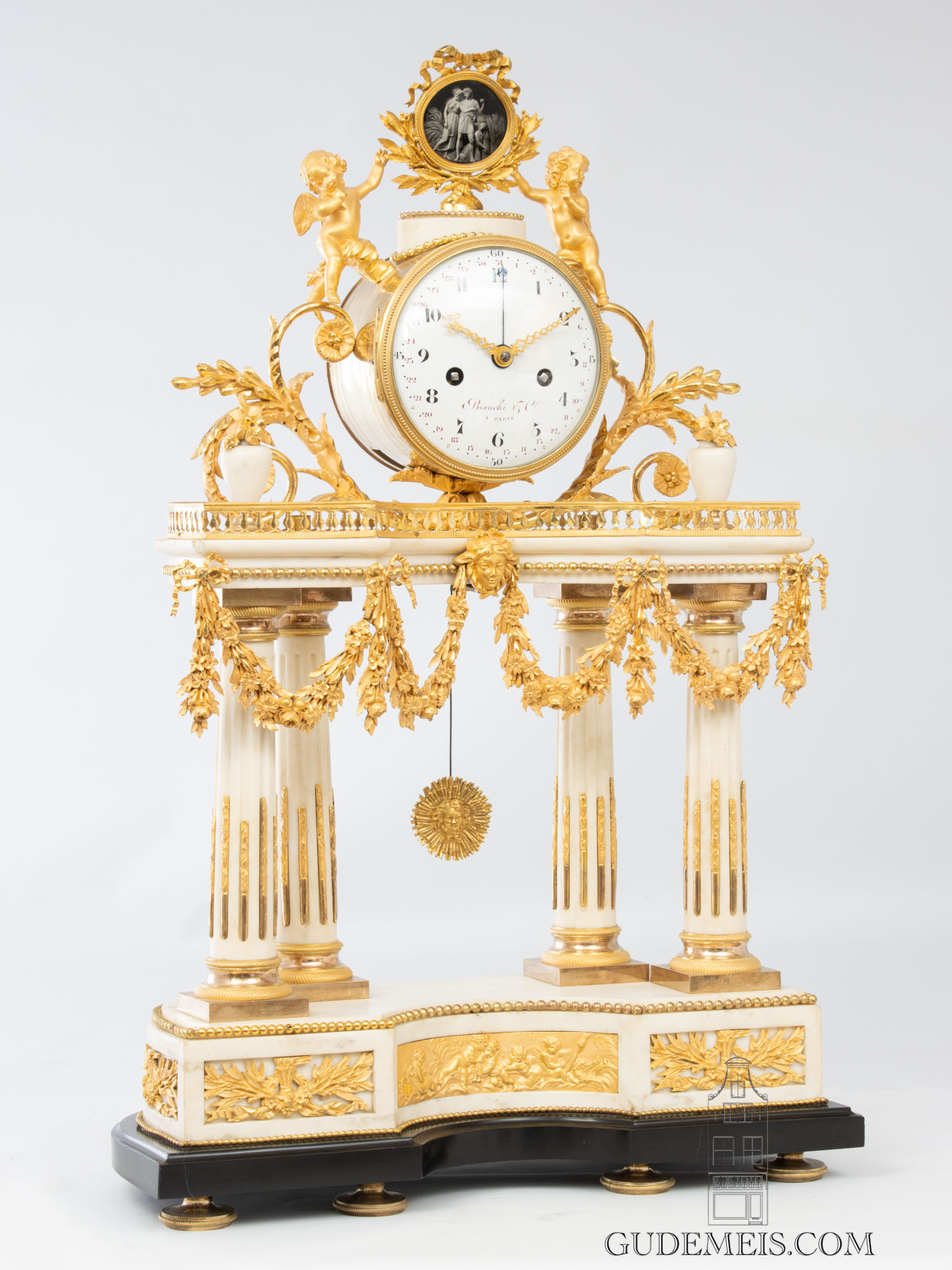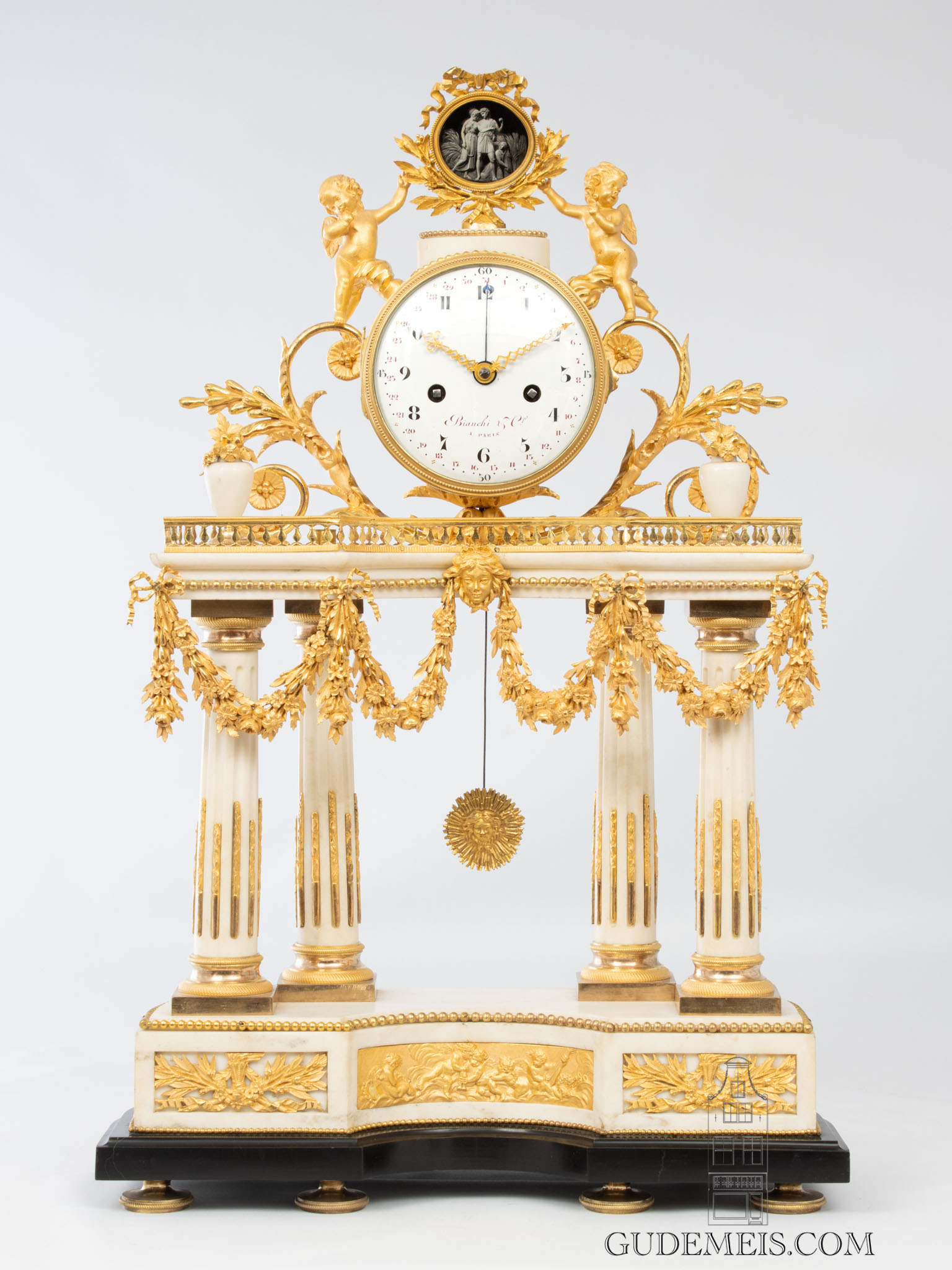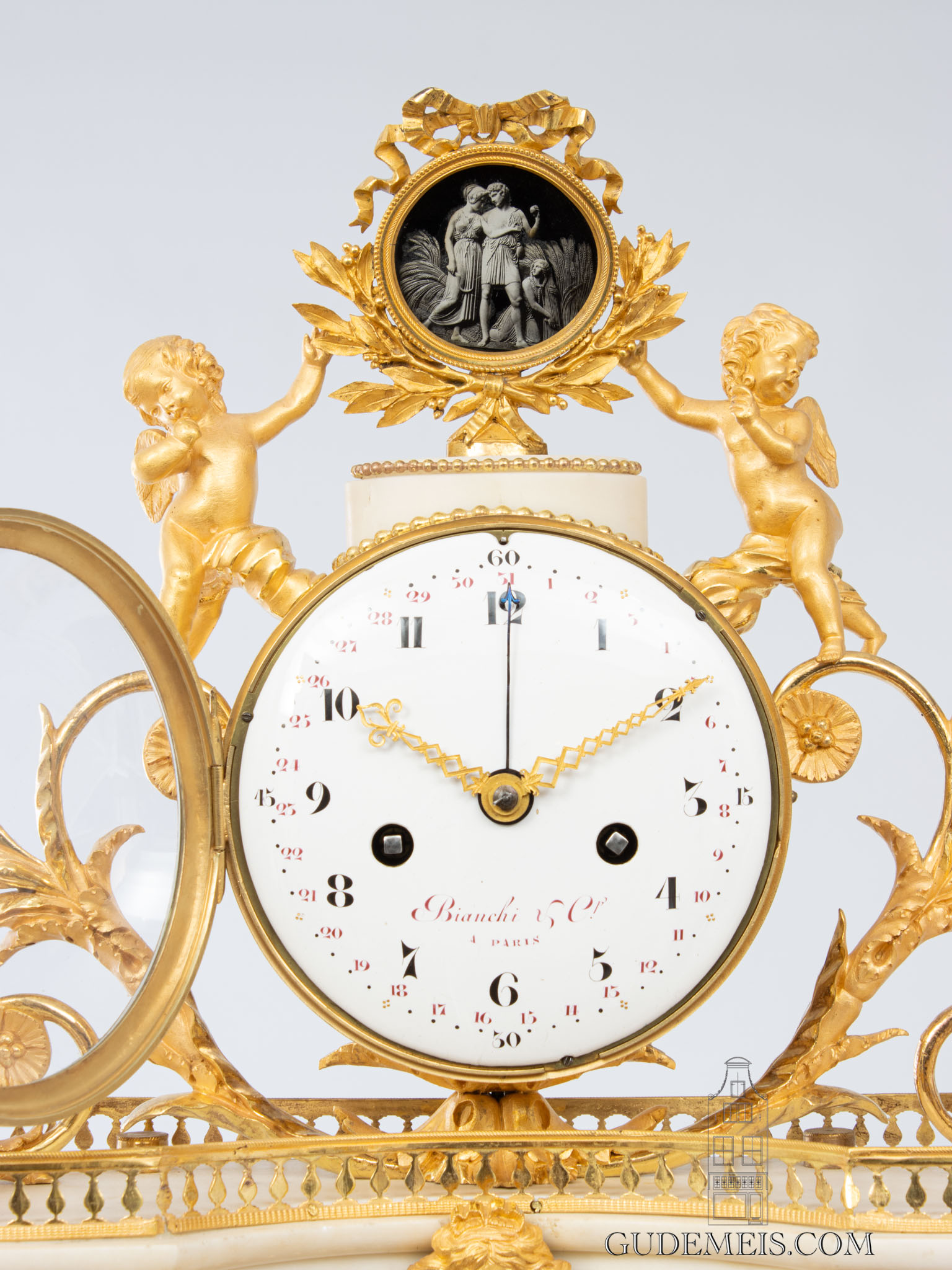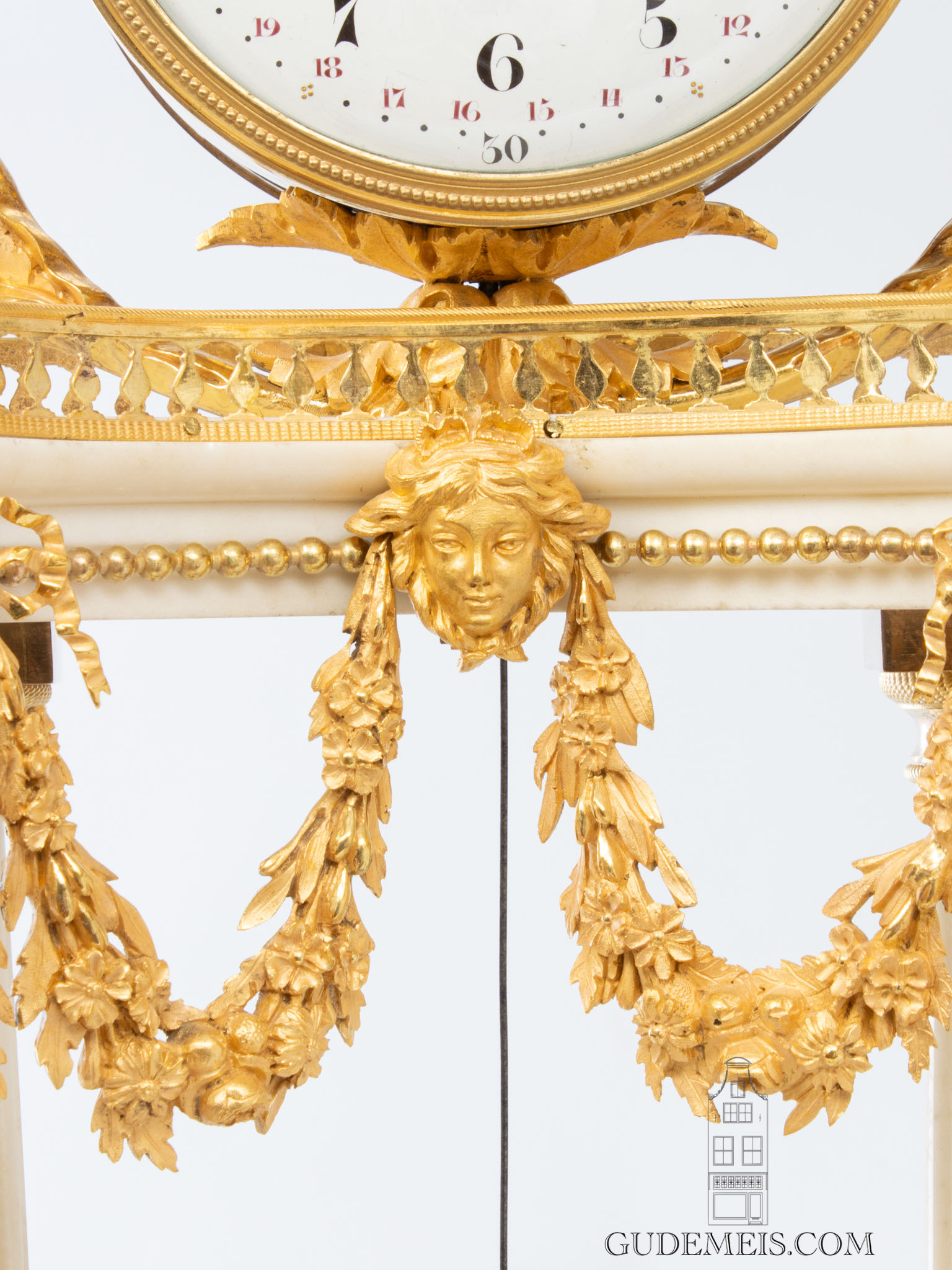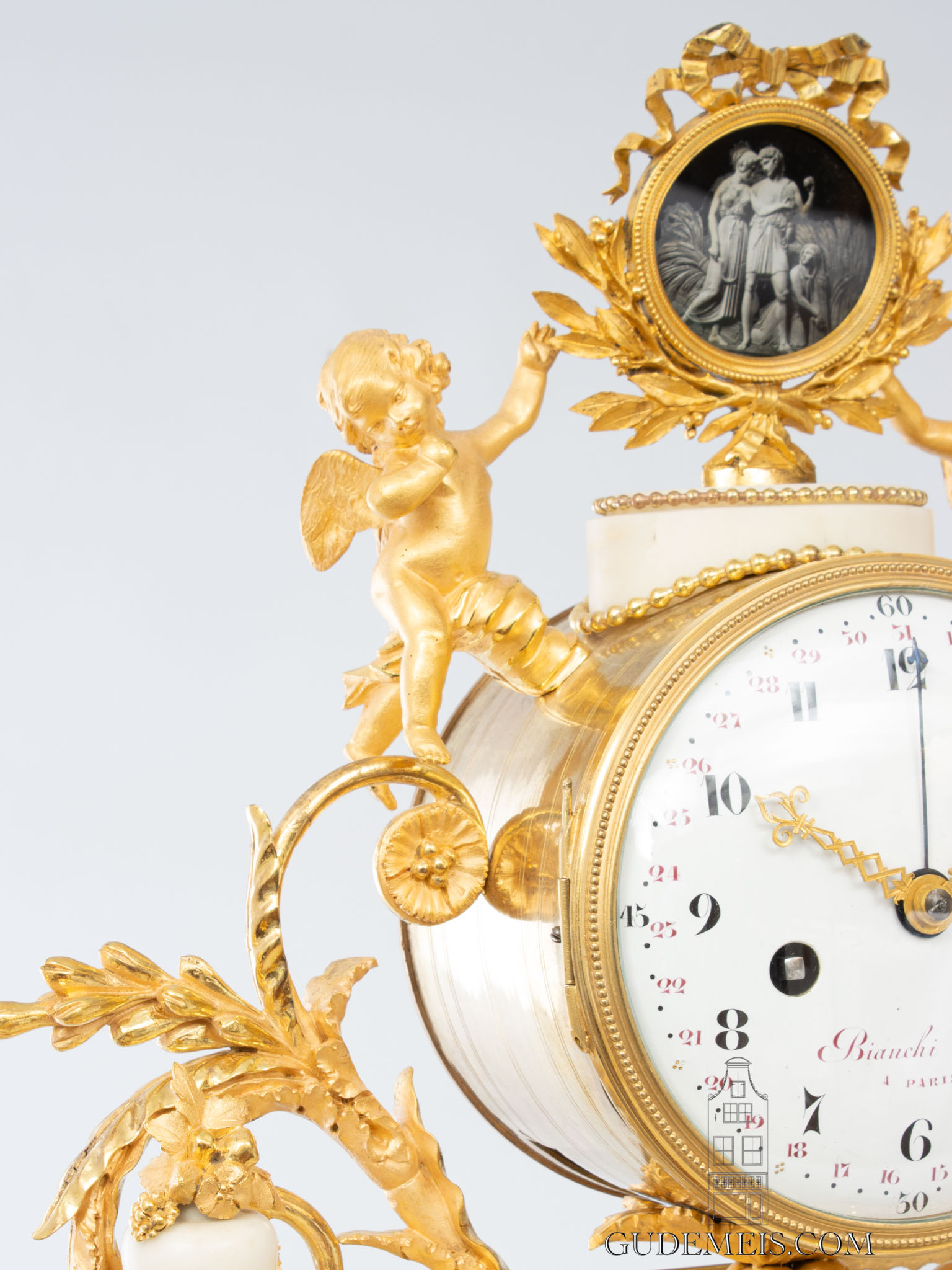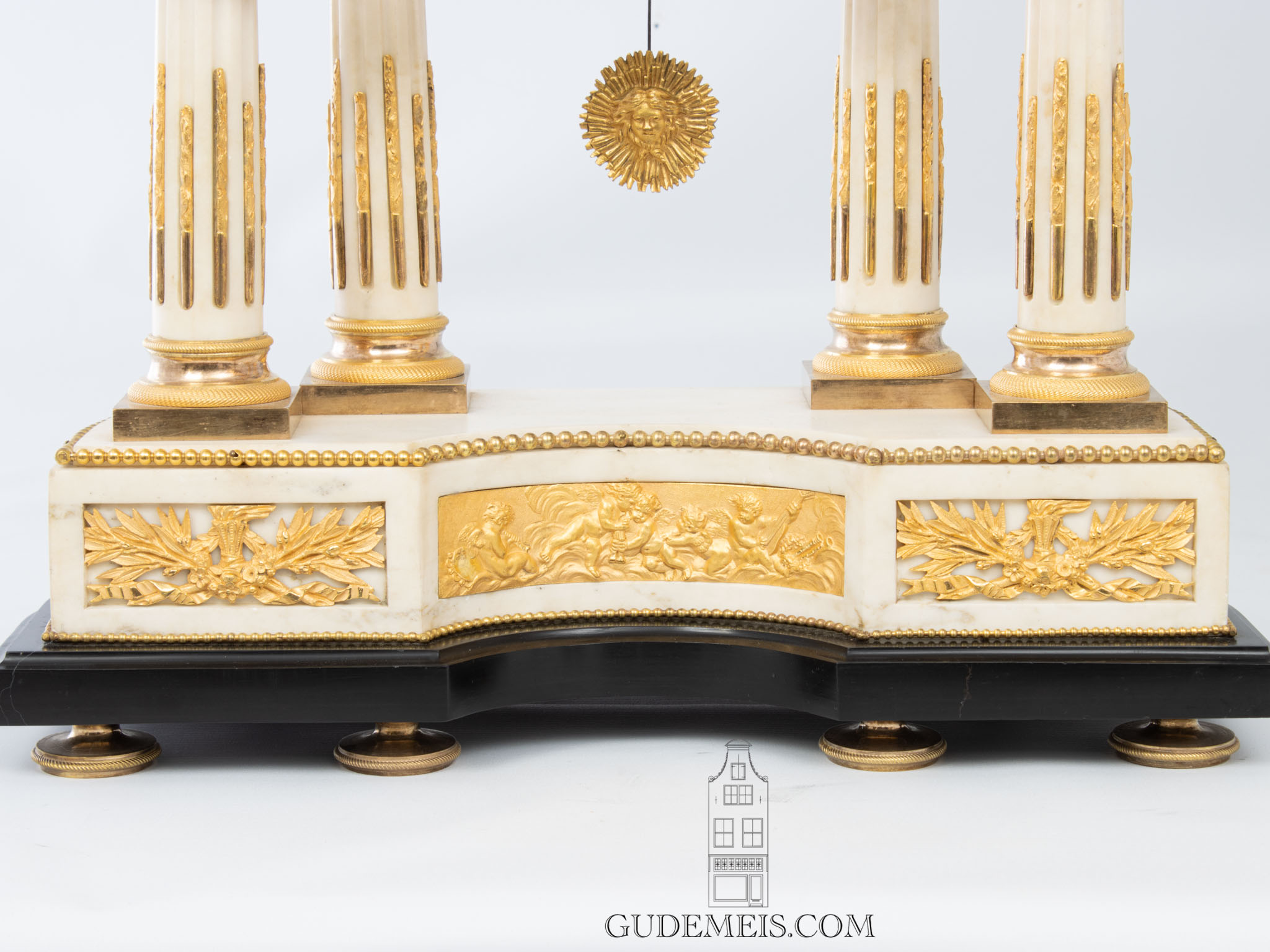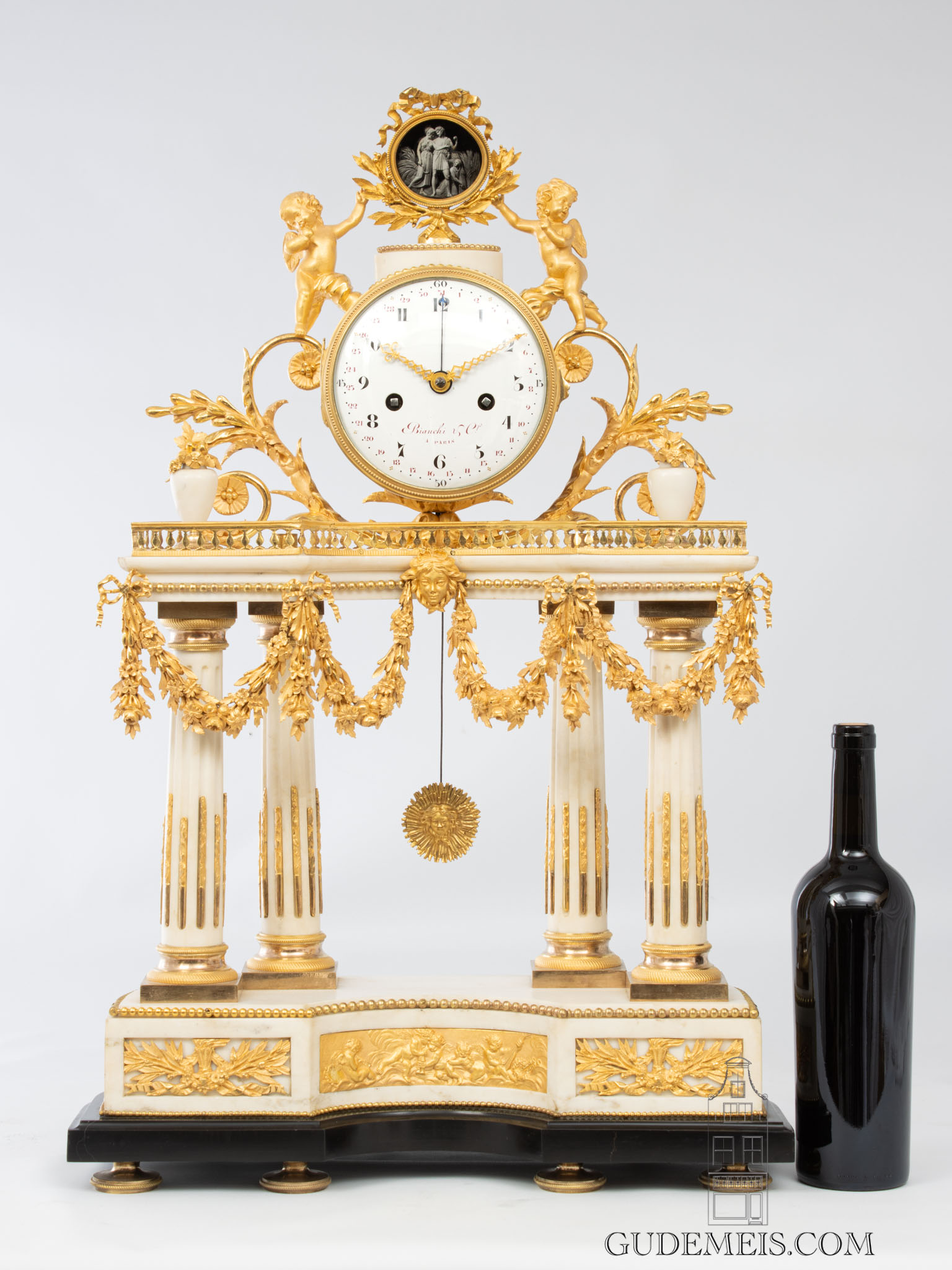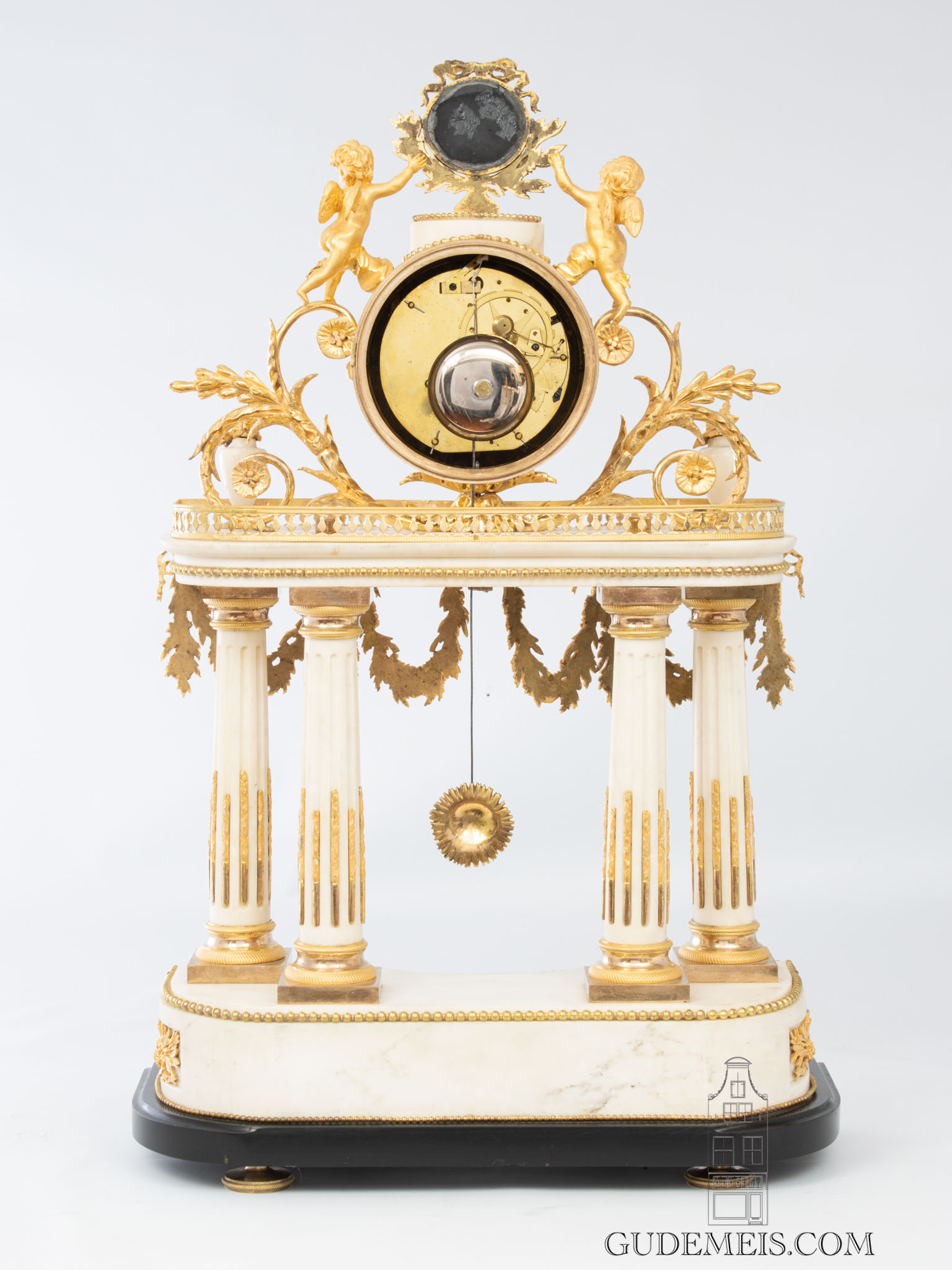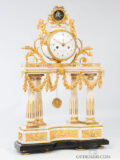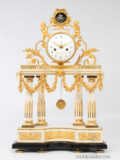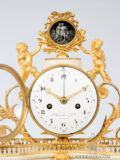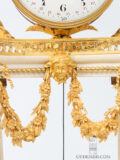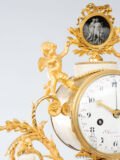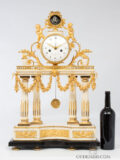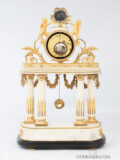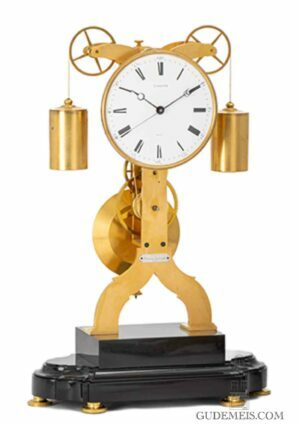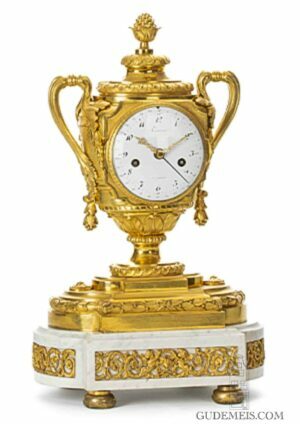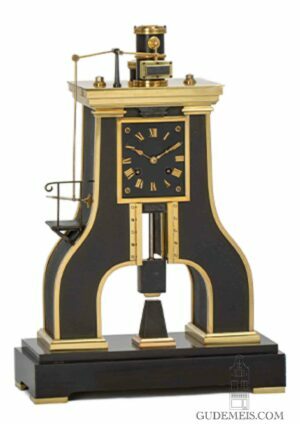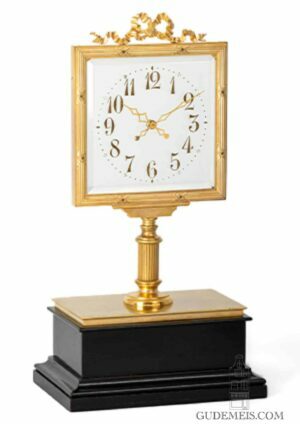A monumental French Louis XVI marble and ormolu portico mantel clock, Bianchi & Cie A Paris, circa 1770.
Description
Louis XVI
During the reign of Louis XVI, there was a renewed interest in the art and culture of Classical Antiquity. This is why this period is sometimes referred to as “Classicism”. This admiration for that ancient legacy could lead to a slavish imitation or copying of it. However, as not much was known about this culture at all yet, this is not the case. The artists and artisans took what little was known and created something new with it. This can be seen beautifully in this fine clock. The architectural base with its classical columns is combined with the decorative elements such as garlands and acanthus leaves to create a new balanced design. The high quality of the gilt bronze mounts further confirms the skill of the makers. Without a doubt, this fine object was made to impress when considering its size and monumentality. That is certainly still true today. It was and is a real eye-catcher, a highlight in an interior.
Arabic numerals
The enamel dial has Arabic numerals. Around these are red numbers for the date indication. The outer rim consists of dots for the minutes with quarter-hour indications and a gilt dot highlighting the five minute marks. The centre is signed in red Bianchi & Cie. A Paris. The handsome fleur-de-lis hands are made of gilt brass.
Anchor escapement
The movement is driven by two spring barrels and has a duration of at least two weeks. It is regulated by anchor escapement combined with a pendulum suspended from a silk thread with a pendulum bob shaped as a sun burst mask. The clock strikes the hours and half hours by means of a countwheel on a bell.
Classicism
The clock is fitted in a gilt case surmounted by a cartouche flanked by putti on floral scrolls that now holds a glass negative. The whole is set on a marble platform that is convexly curved at the front and supported by classical columns with gilt bronze mounts. The heavy base is also convexly curved at the front and features classical relief with putti and mounts. It is raised on turned feet.
